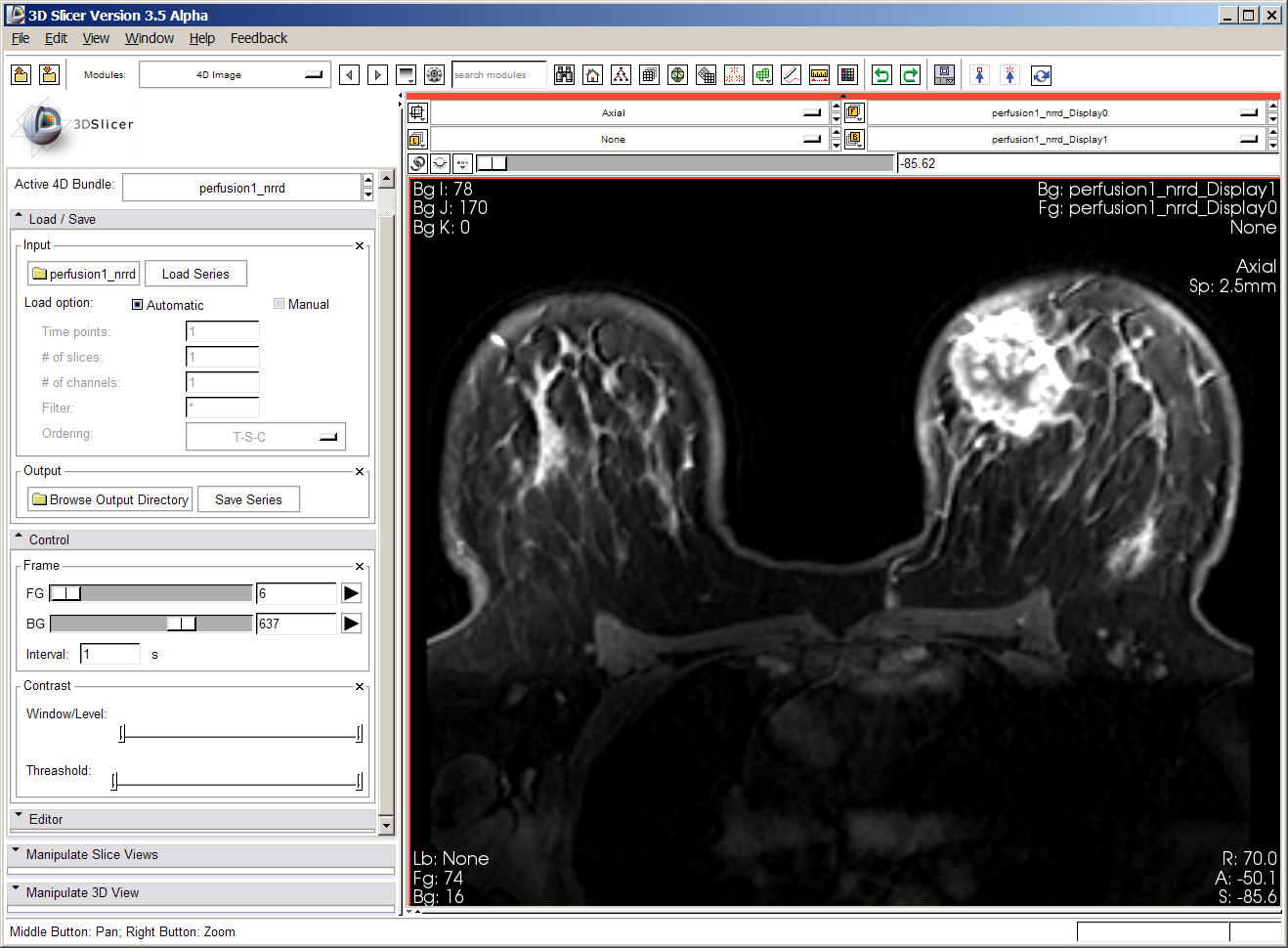Slicer3:UIDesign:WorkingProblems:BCAnalysis:Dynamic
From Slicer Wiki
Home < Slicer3:UIDesign:WorkingProblems:BCAnalysis:Dynamic
Back to Project Overview
Contents
Perfusion Analysis for Breast Cancer
Goal
Goal is to accommodate basic RECIST assessment for breast cancer (Response Evaluation Criteria In Solid Tumors). (RECIST is a set of published rules that define when cancer patients improve ("respond"), stay the same ("stable") or worsen ("progression") during treatments).
- Determine features that currently exist in Slicer
- Develop features that don't
- Provide a framework that knits features together in a comfortable workflow.
Perfusion Analysis Workflow
- Visualize the dataset dynamically
- Specify an ROI that includes tumor and apply to all timepoints Question: ROI or VOI? (either -- if slice, must be same slice)
- Plot contrast dilution curve
- show time to peak in tumor
- Specify an ROI that includes blood pool and apply to all timepoints Question: again, ROI or VOI?
- Plot contrast dilution curve for this (on same graph)
- show time to peak in blood pool
- show transit time (distance between peaks in each plot)
- save out timepoints ( Intensity(t) for each ROI -- include multiple tumors if desired)
First experiment
Below is a screenshot of first perfusion dataset. The dataset contains upward of 900 volumes. Loading the original DICOM images took a very long time; Junichi converted these images to nrrd format, but the loading still takes prohibitively long, and interacting is also very slow.
ideas: =
- can we create a VOI and apply to each volume in the timeseries?
- Alternatively, for a first demo we can use a smaller dataset?
Also, I'm having difficulty building the 4DImage analysis package (seems numpy includes not found)... will ask Junichi for his input.
